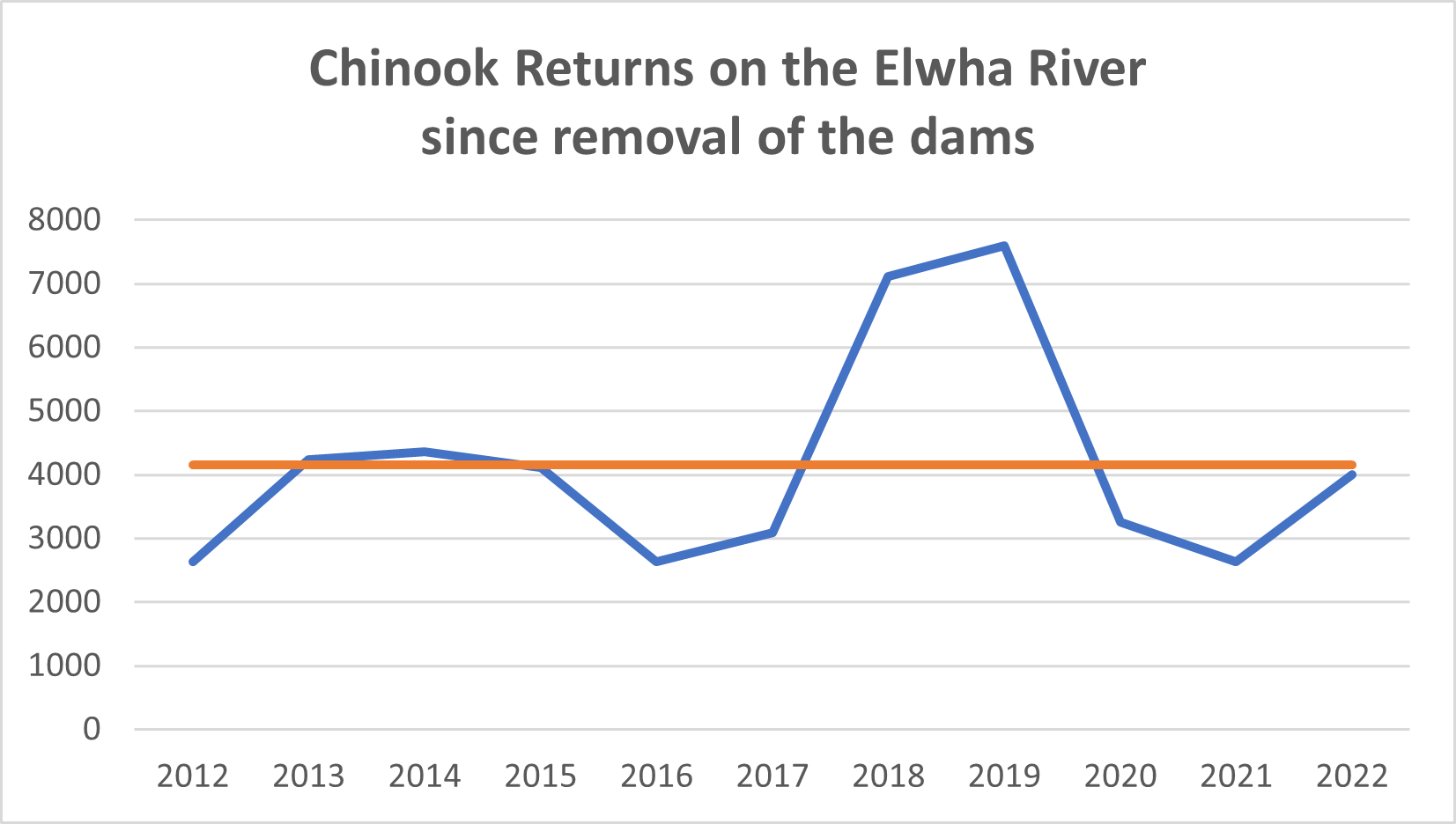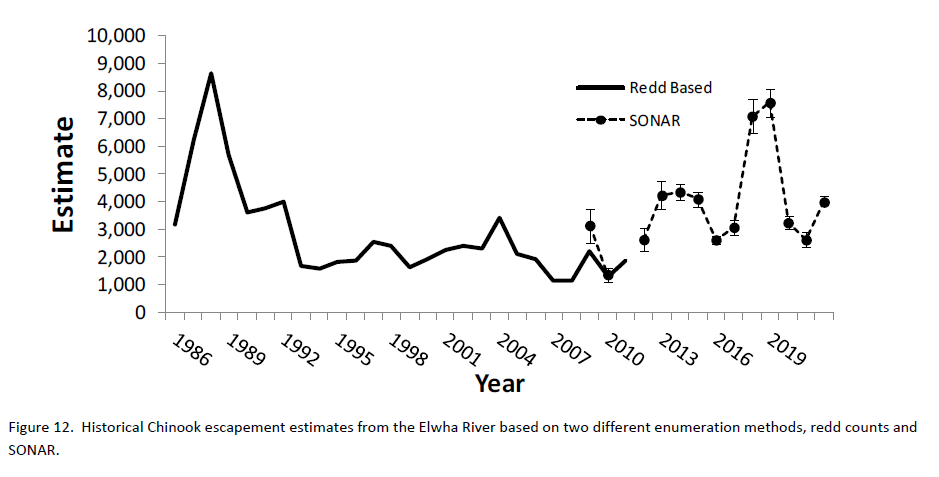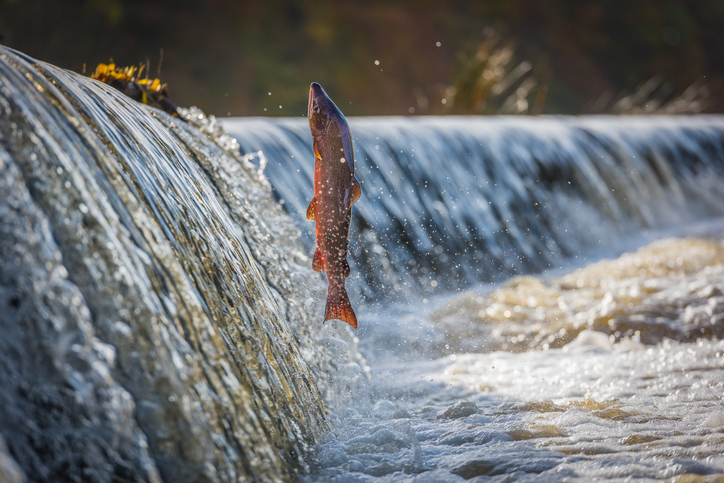It has been about ten years since the first dam on the Elwha River was removed in 2012 and the Department of Fish and Wildlife recently released the final counts of salmon returns for 2022. There is good and bad news.
The good news is that for Chinook, Coho, and Steelhead, returns were up from 2021. Both Steelhead and Coho saw their highest levels since the removal of the two dams.
 Chinook returns, however, were still below the 10-year average. Despite claims that Chinook are “surging back,” returns have been below that average three years in a row. As the report notes, Chinook are “one of the species of most concern in the Elwha River,” because Puget Sound Chinook are listed as threatened.
Chinook returns, however, were still below the 10-year average. Despite claims that Chinook are “surging back,” returns have been below that average three years in a row. As the report notes, Chinook are “one of the species of most concern in the Elwha River,” because Puget Sound Chinook are listed as threatened.
Steelhead returns have been growing consistently and benefitted from a large stock of Rainbow Trout above the dams that became ocean-going when the dams were removed.
Comparing Chinook populations after the removal to those before is challenge because the technique for counting changed. Using SONAR, which is considered more accurate, only began in 2009. Prior to that, populations were estimated based on counting salmon nests called redds. In the 2022 survey, while the SONAR Chinook estimate was 3,998, the estimate using the redd method was only 3,118 fish, about 78 percent of the SONAR count. The report authors note, “Our SONAR based estimate being greater than the redd count plus broodstock removal total is consistent with previous years and not unexpected for a variety of reasons, mainly undetected spawning and redd superimposition.”  If counts using the redd method were low, then post-removal Chinook populations are similar to those before the dams were removed. But the actual amounts are unclear.
If counts using the redd method were low, then post-removal Chinook populations are similar to those before the dams were removed. But the actual amounts are unclear.
When the dams were removed, Chinook fishing was stopped for five years. Since then, the moratorium has been extended and is in effect until June 30, 2023. Clearly, populations have not recovered as rapidly as had been hoped.
The Chinook numbers contradict the claim from the Biden Administration’s report calling for the destruction of the four Lower Snake River dams that, “Large-scale habitat access projects, such as dam removal on Washington’s Elwha River, have demonstrated that they can promote dramatic abundance and productivity gains…” With regard to Chinook, the gains have been inconsistent.
The Department of Fish and Wildlife report also notes that while the ratio of natural and hatchery fish has not been completed for 2022, “the vast majority of adult returns have been hatchery origin through 2021.” The report does note that the natural production of Chinook is increasing, which they hope will lead to an increased number of natural origin adults returning to the Elwha “at longer time scales.”
Salmon runs on the Elwha have been cited as evidence that dam removal yields guaranteed and near-term increases in population. Contrary to those claims, however, a decade of returns since the dams were removed indicates recovery is more complicated, even in a case like the Elwha where dam removal opened up a large stretch of habitat. It also makes clear that hatcheries will continue to play an important role in maintaining populations of salmon across the Northwest.
Given the mixed results, the Biden Administration and others who point to the Elwha as a clear success story should tone down the political rhetoric and look more closely at the science and real-world results.



